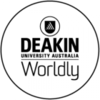Stakeholder analysis allows for the collection of knowledge and information from a wide range of sources and provides a valuable way to identify the conflicting knowledge bases and the values that underlie them (Varvasovszky and Brugha 2000). Stakeholders (including scientists and science agencies) can be defined as:
…individuals who affect or are affected by certain decisions and actions. These individuals can be clustered into stakeholder categories according to their similarity in views, position(s) on an issue, and/or how they affect or are affected by the issue under discussion (Prell et al. 2009).
Stakeholder analysis can be used to
- Define those particular issues within the specified study areas that required some type of decision-making
- Identify all those individuals, groups and institutions that either affect or are affected by the particular phenomena
- Elucidate the filters and constraints (including power and resources) in the operating environment (Reed et al. 2009).
By asking the question “what is at stake and for whom?” in several iterations an increasingly clear depiction of the stakeholders and their stakes can be developed. Identifying the issue or problem is also a key step, recognising those different stakeholders will view issues differently. Work to mediate issues and stakes can termed being ‘boundary spanning’, which embodies a diverse range of possible practices. Done well, boundary work links issues and stakes and can produce useable knowledge through engagement with stakeholders. Boundary work can include a number of elements and engage stakeholders in different ways, depending on the nature of the issue and stakes:
- Science Communication (product focus): existing has well defined needs for information and knows how to apply it, useful for well-structured problems.
- Informal linkages (relationship focus): building informal linkages among key stakeholder groups can begin to create mutual understanding of stakes and values across groups.
- Brokering/intermediary (actor focus): building capacity within organisations that manage problems in which science and community values are both important.
- Temporary organisation (structure/network focus – e.g. reference groups): helps address complex, short-term issues but can build trust and engagement.
- Boundary organisation (organisation focus): address long-lived, persistent ‘wicked’ problem, managing complex conditions, often within multiple organisations but with potential for overreach.
Further Reading
Leith, P., K O’Toole, M. Haward, B. Coffey, C. Rees, E. Ogier. 2014. Analysis of Operating environments; A diagnostic model linking science, society and policy for sustainability. Environmental Science & Policy DOI : http://dx.doi.org/10.1016/j.envsci.2013.01.001
Prell, C., K. Hubacek and M. Reed. 2009. Stakeholder Analysis and Social Network Analysis in natural Resource Management Society and Natural Resources, 22:501–518.
Reed, M.S., et. al. 2009. Who's in and Why? A Typology of Stakeholder Analysis Methods for natural Resource Management. Journal of Environmental Management 90 (5): 1933-49. Varvasovszky, Z., and R. Brugha. 2000. A Stakeholder Analysis. Health Policy Plan. 15 (3): 338-45.










